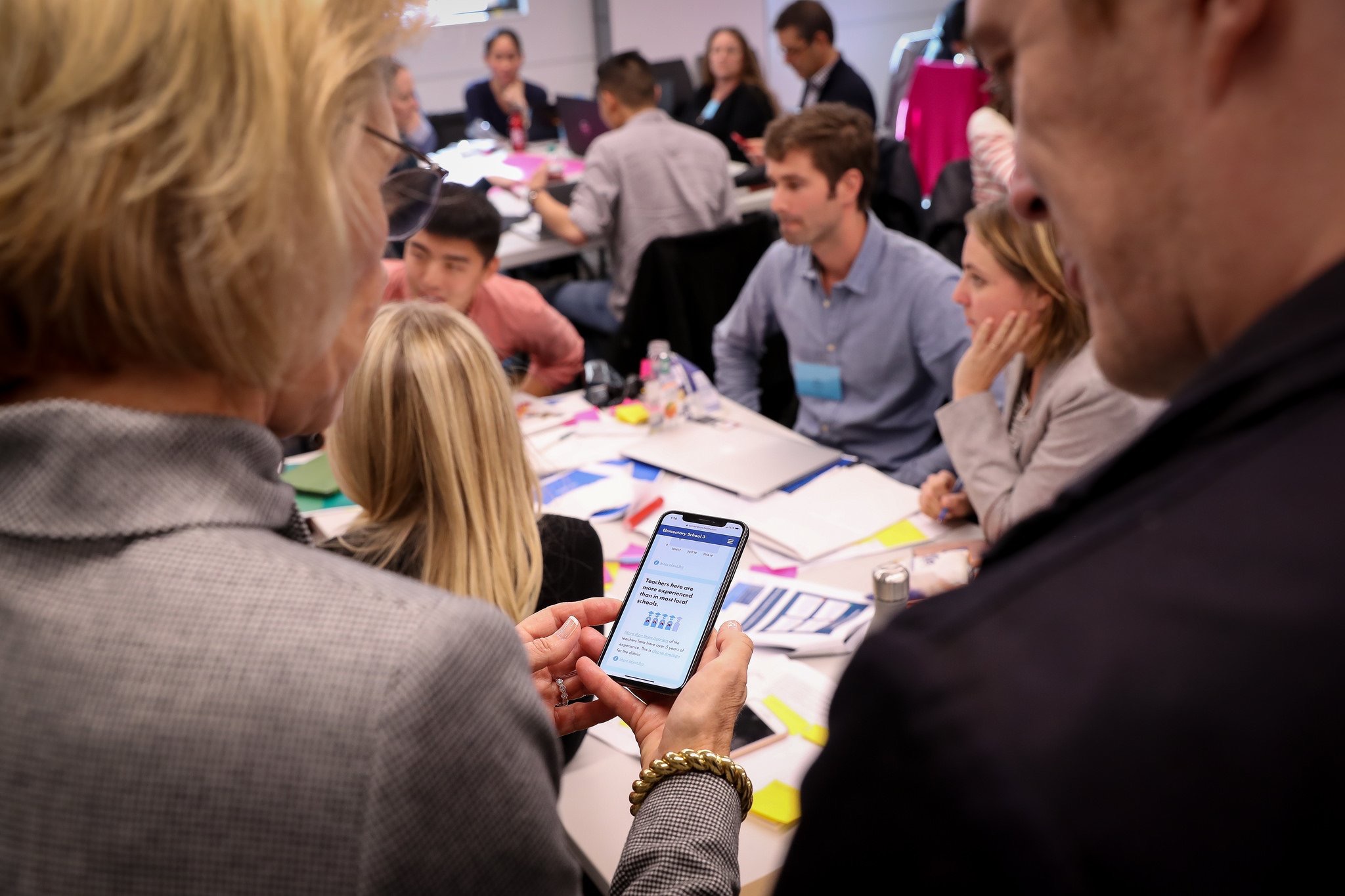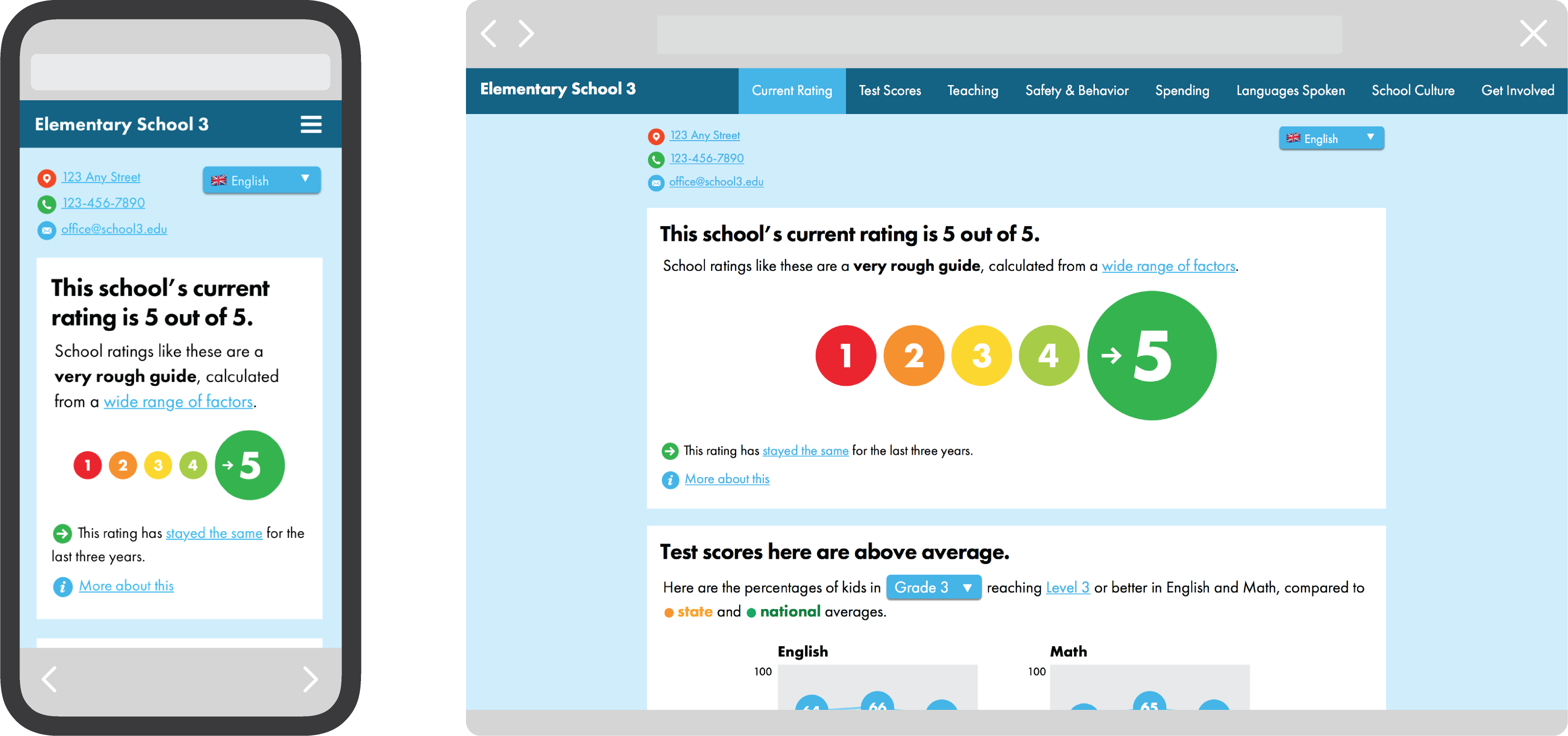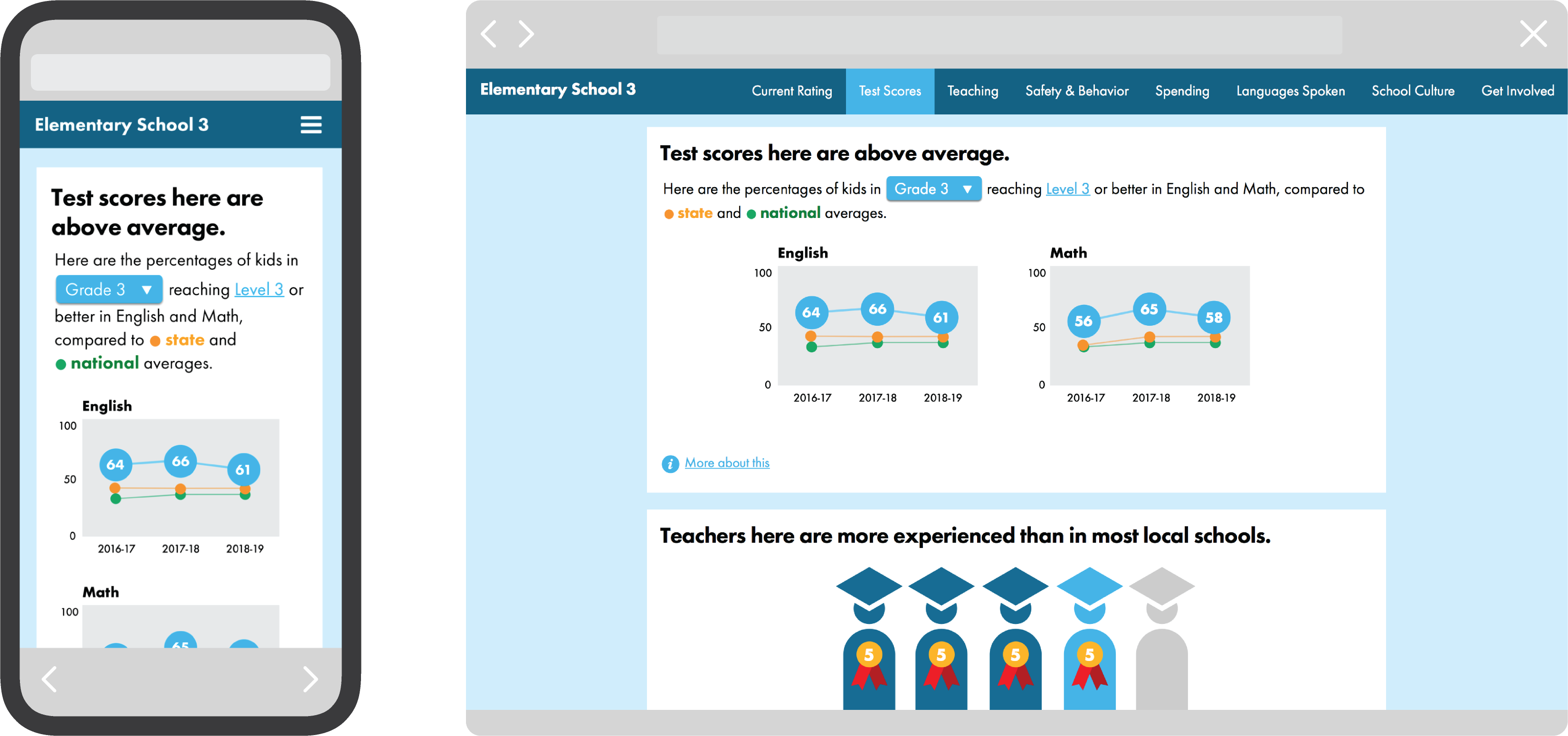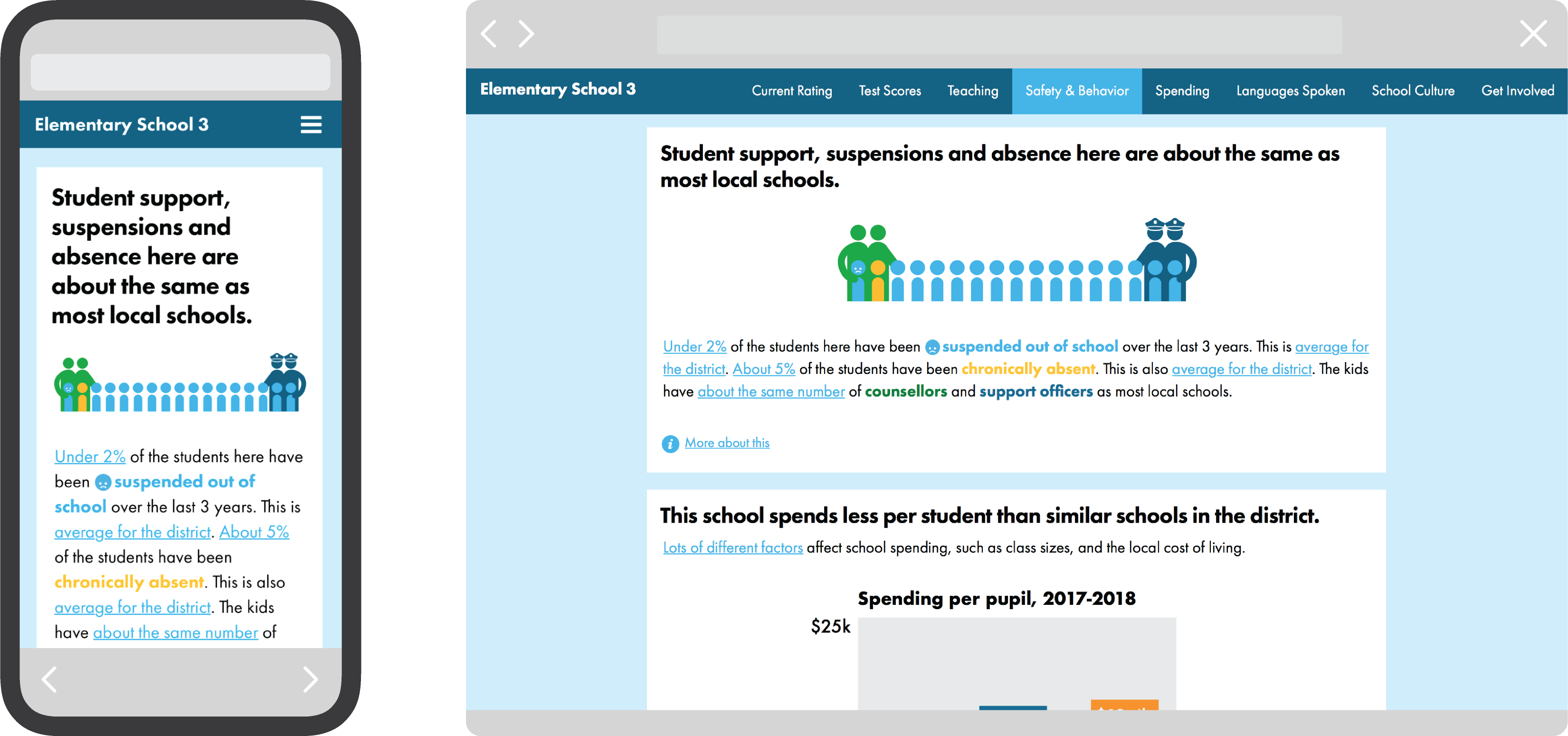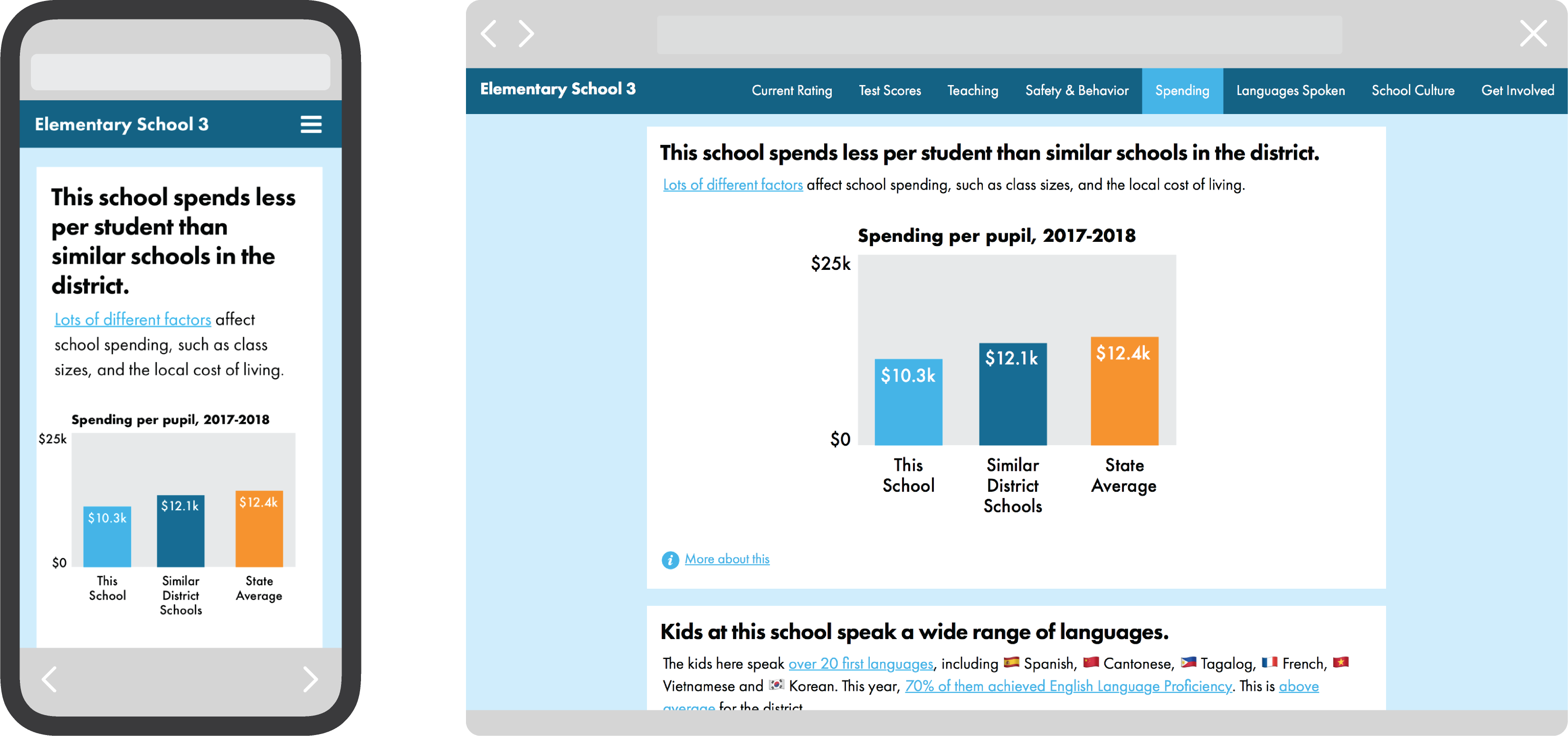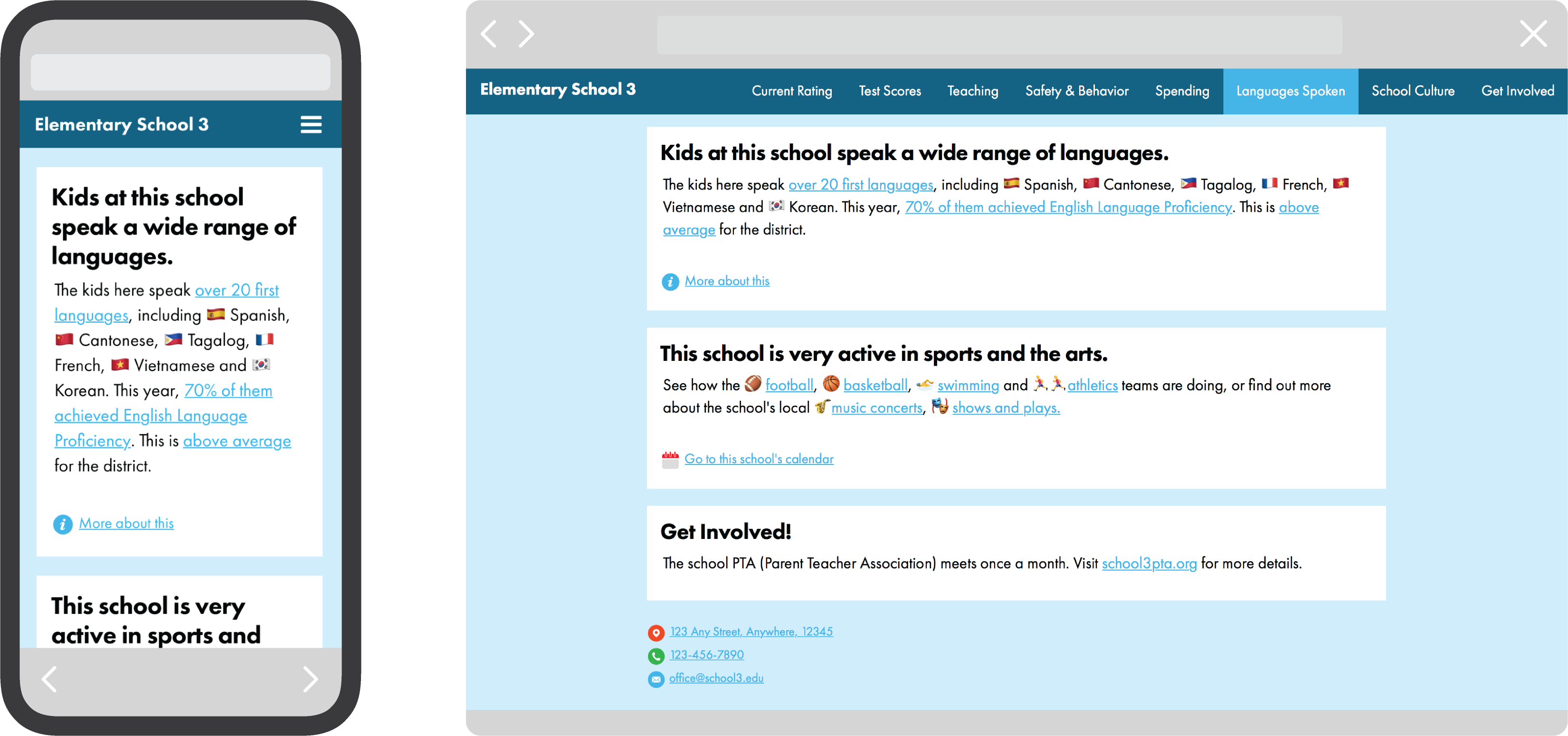November 2018
Parents, schools and data literacy
Matt took part in a workshop run by the US Department of Education’s Office of Educational Technology and the Data Quality Campaign, looking at how to make schools data more approachable and understandable.
The Every Student Succeeds Act of 2015 (ESSA) requires that all schools in the country produce an annual report card, showing a range of publicly available government data for the school. The data covers a wide range of metrics, from test scores to per-pupil expenditure, and can be unwieldy for even the most experienced parent to navigate.
The two-day workshop in Washington DC was an opportunity for key stakeholders – from policymakers to PTA representatives – to work alongside designers and developers, and figure out ways of making these dense datasets more digestible.
Two-day prototype
Both the Office of EdTech and Data Quality Campaign have led extensive research and strategy on how effective data use can encourage parents to engage more with their local schools. With their input, and advice from parent advocates from the National PTA Association, Matt built a quick prototype to help explore the ideas. Betsy DeVos, US Secretary of State for Education, dropped by the workshop and had a play with it!
Simple & Conversational
Focus on plain words, get rid of jargon, and don’t leap straight to graphs and charts. Here, Matt used the data to make simple, conversational summaries about each school. The goal was to make the site feel like two parents chatting at the school gate.
Mobile-first
This is pretty much a given in 2018, but it’s always worth repeating. A mobile-first approach helps keep the focus on making things simple and clear. Making each piece of information easy to screenshot and share is a good rule of thumb.
Top down & Bottom up
The prototype also explores how schools could add their own local data – for example, the school calendar – to their ‘official’ state or district-level data. This could help prospective parents visit a school event before moving to the neighborhood, as well as allow existing parents and kids to identify more with their school community.
Identity, inclusiveness and pride
Finding simple, emotionally-resonant information about a school – like the number of languages spoken by the kids – can help people identify themselves and each other in a sea of otherwise dry, impersonal information. A good summary should show a school as a community, not just as a set of data points.
Making as Thinking
This two-day prototype just hints at the outlines of the complex social, cultural, economic and political contexts that surround designing for schools. But, as a tool for discussion and exploration, a prototype is worth a thousand meetings.
If you’d like to know more about how Extraordinary Facility helps everyone from teachers to toymakers get their ideas into the world, do get in touch!
